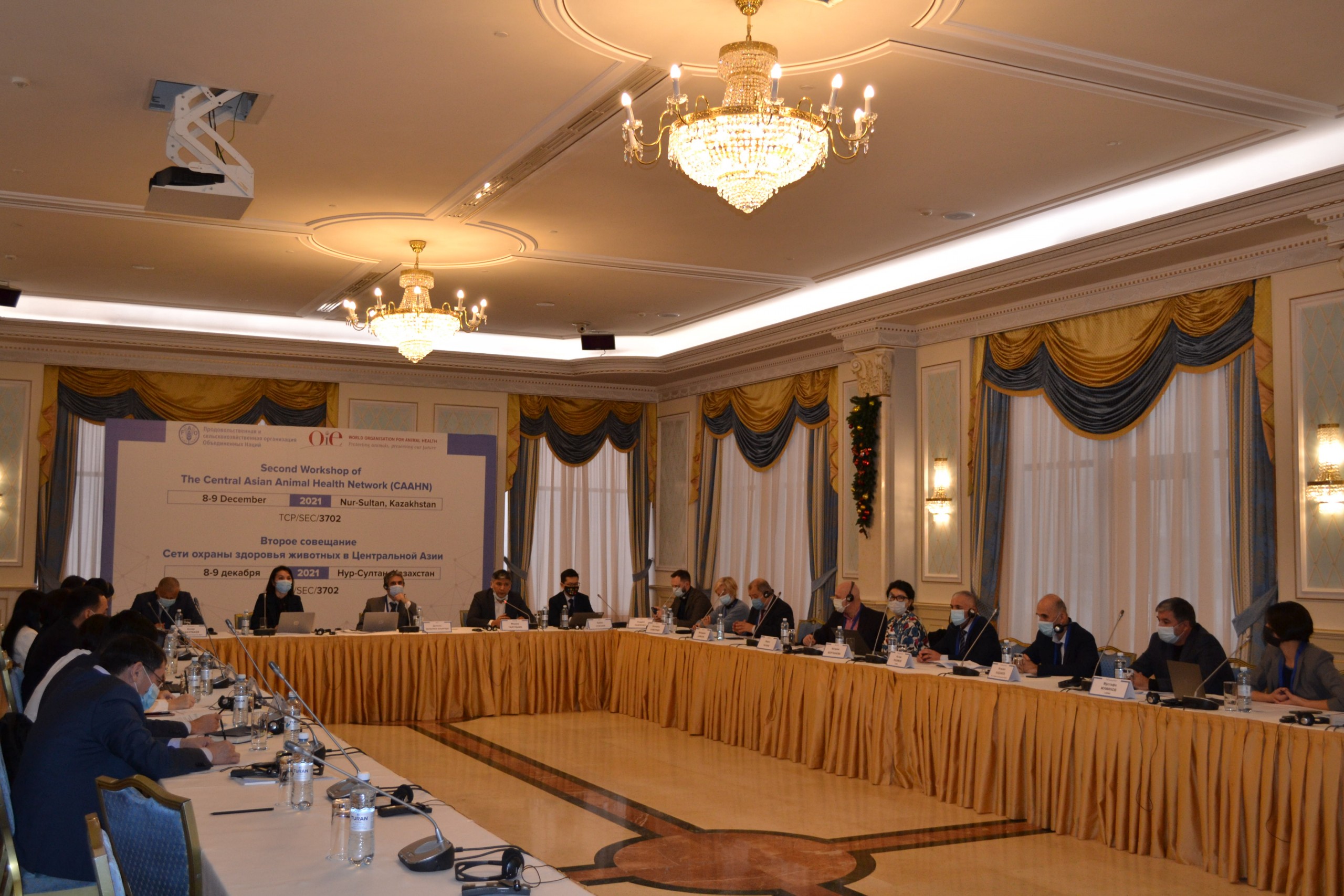The FAO Regional Office for Europe and Central Asia in collaboration with the OIE Sub-Regional Representation for Central Asia organised the second workshop of the Central Asian Animal Health Network (CAAHN) from 8 to 9 December in Nur-Sultan, Kazakhstan.
Given the transboundary nature of most animal diseases, to exchange information and experience, identify priorities and agree on key issues, and joint actions within the framework of the FAO and OIE project, at the first meeting in November 2019 in Tashkent, a joint decision was made to create an animal health network in Central Asia (CAAHN).
Two years after its launch, Network members (Kazakhstan, Kyrgyzstan, Tajikistan, Turkmenistan, and Uzbekistan) gathered with representatives of international organizations, particularly FAO, OIE, WHO, EuFMD, CDC, DTRA, World Bank, and Asian Development Bank, to give updates on Network activities, discuss “One Health” initiatives, and agree on short-, medium- and long-term goals and priorities for the Network (including training needs).
“As noted, the main goal of this initiative is to strengthen the coordinating role of national services in joint actions at the regional level. The joint support of international organisations will strengthen interstate cooperation in this area. The joint work of global partners within the framework of the “One Health” approach will allow countries to strengthen intersectoral cooperation at the national levels,” emphasized Mereke Taitubayev, the OIE Representative for Central Asia.
“Today’s meeting contributes significantly to strengthening the capacity of the Network’s member countries in the process of forming the “One Health” approach,” noted Zhanyl Bozayeva, FAO Program Coordinator in Kazakhstan, welcoming the meeting participants. “For our part, we are ready to continue to provide technical assistance to the Government of Kazakhstan to address pressing issues in the industry, relying on the potential and accumulated international experience of FAO,” she said.
Daniel Beltran-Alcrudo, the FAO animal health expert, noted that even though the FAO project is coming to an end, the participants came together to summarize proposals for the sustainable development of the network and possible support from both international organisations and member countries of the Network.
The WHO representative suggested expanding the network to align with the “One Health” approach. Now, the active participants in the network are two national coordinators from each country for veterinary epidemiology and laboratory issues. The WHO representative expressed its willingness to strengthen the network by nominating national public health focal points. The terms of reference of the focal point will be discussed later, but suggestions were made for it, it could be a country zoonoses specialist, AMR, etc.
As part of this meeting, a new OIE-WAHIS platform was presented: the Global Reference Animal Health Platform. The new OIE-WAHIS platform allows countries to operate an up-to-date reference database on animal health and zoonoses to coordinate national policies, prevent and control animal diseases, and analyse import risks. The participants of the event expressed high interest in training on using all the capabilities of the new OIE-WAHIS platform for further analysis.
During the meeting, a two-year work plan was developed for the CAAHN, including the possibilities offered by the OIE and FAO virtual training platforms for specialists in the region, solving issues related to the activities of laboratories and sanitary and epidemiological services, and other top priorities in the field of animal health.



